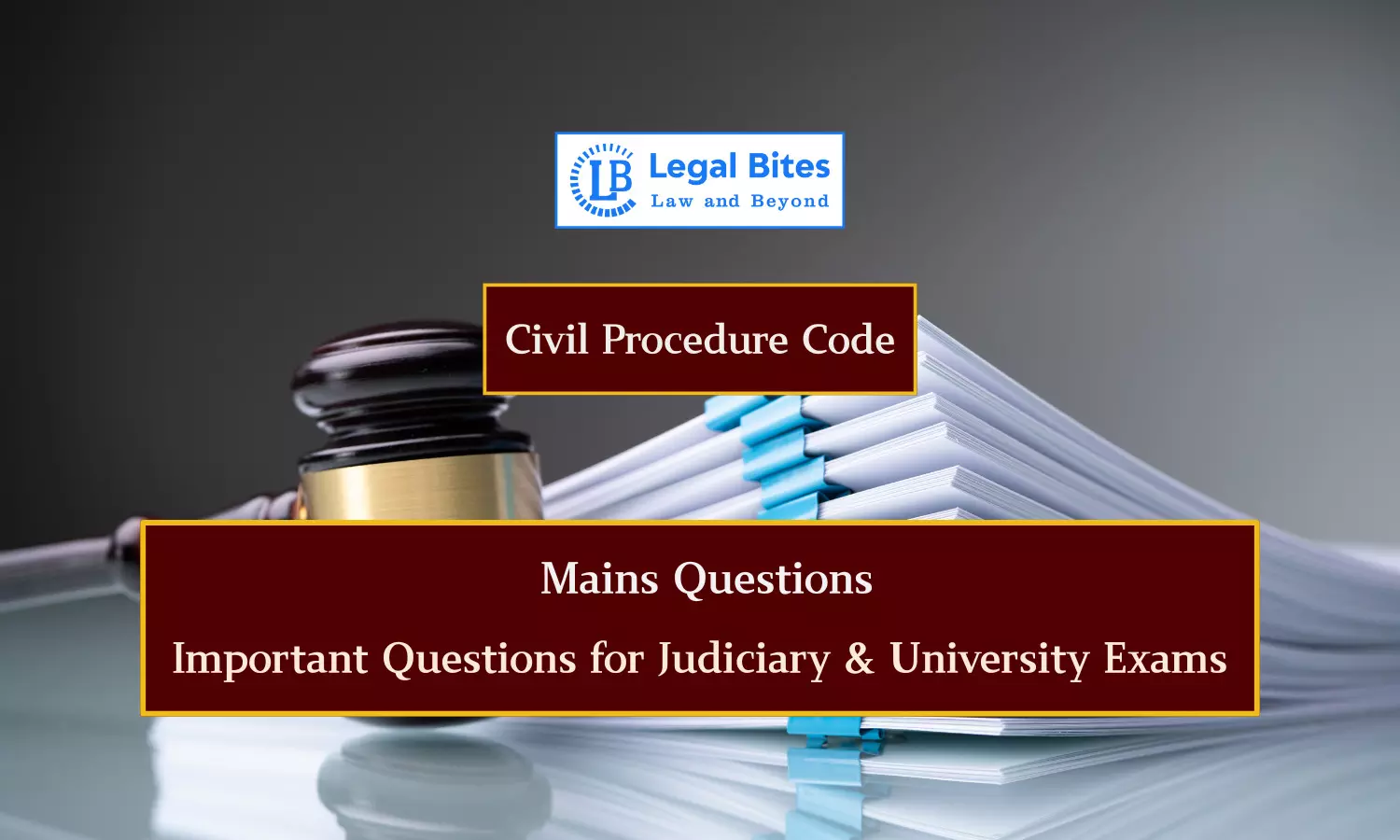What do you understand by ‘Defence’? Is there any form of defence provided in the Civil Procedure Code, 1908?
Find the answer to the mains question only on Legal Bites.

Question: What do you understand by ‘Defence’? Is there any form of defence provided in the Civil Procedure Code, 1908?Find the answer to the mains question only on Legal Bites. [What do you understand by ‘Defence’? Is there any form of defence provided in the Civil Procedure Code, 1908?]AnswerIn a civil suit, defence refers to the response made by the defendant to the claims raised by the plaintiff. It comprises all objections, denials, counter-allegations, and legal grounds invoked...
Question: What do you understand by ‘Defence’? Is there any form of defence provided in the Civil Procedure Code, 1908?
Find the answer to the mains question only on Legal Bites. [What do you understand by ‘Defence’? Is there any form of defence provided in the Civil Procedure Code, 1908?]
Answer
In a civil suit, defence refers to the response made by the defendant to the claims raised by the plaintiff. It comprises all objections, denials, counter-allegations, and legal grounds invoked to either rebut the plaintiff’s case or assert an alternative narrative of facts. The primary mode of presenting a defence is through a written statement, governed by Order VIII of the Civil Procedure Code, 1908.
As per Order VIII Rule 1, the defendant is required to file the written statement within 30 days of service of summons. However, the court may extend this period up to a maximum of 90 days, provided sufficient cause is shown. The written statement must specifically admit or deny each allegation made in the plaint. Vague or evasive denials are discouraged. Under Order VIII Rule 5, if the defendant fails to specifically deny an allegation, the court may treat such facts as admitted.
In addition to denying the plaintiff’s claims, the CPC allows for certain special defences, such as:
- Set-off (Order VIII Rule 6): Where the defendant claims that the plaintiff owes them a certain sum, which should be deducted from any amount payable.
- Counter-claim (Order VIII Rule 6A): Where the defendant asserts a separate claim against the plaintiff in the same suit, thereby avoiding multiple proceedings.
A significant judicial interpretation of the defence mechanism under CPC is found in the case of Balraj Taneja v. Sunil Madan, (1999) 8 SCC 396. The Hon’ble Supreme Court held that a court cannot automatically pass a decree under Order VIII Rule 10 merely because the defendant has failed to file a written statement. The court must still consider whether the plaintiff’s case is established and if any disputed facts require evidence. This ensures that procedural lapses do not override the requirement of substantive justice and that an opportunity to present a proper defence is always preserved.
Thus, the Civil Procedure Code, 1908, not only mandates the timely filing of a written statement as a form of defence but also ensures that defendants are given a fair opportunity to contest the claims against them. The CPC recognises various forms of defence—substantive and procedural—and through judicial interpretation, maintains a balance between procedural efficiency and principles of natural justice.
Important Mains Questions Series for Judiciary, APO & University Exams
- CPC Mains Questions Series: Important Questions Part – I of X
- CPC Mains Questions Series: Important Questions Part – II of X
- CPC Mains Questions Series: Important Questions Part – III of X
- CPC Mains Questions Series: Important Questions Part – IV of X
- CPC Mains Questions Series: Important Questions Part – V of X
- CPC Mains Questions Series: Important Questions Part – VI of X
- CPC Mains Questions Series: Important Questions Part – VII of X
- CPC Mains Questions Series: Important Questions Part – VIII of X
- CPC Mains Questions Series: Important Questions Part – IX of X
- CPC Mains Questions Series: Important Questions Part – X of X

Mayank Shekhar
Mayank is an alumnus of the prestigious Faculty of Law, Delhi University. Under his leadership, Legal Bites has been researching and developing resources through blogging, educational resources, competitions, and seminars.
